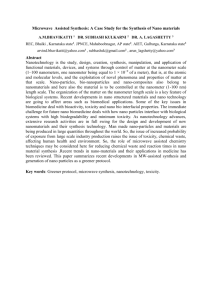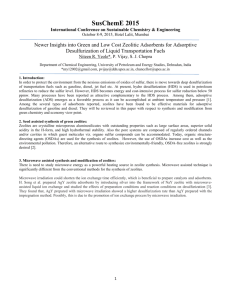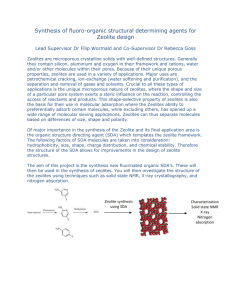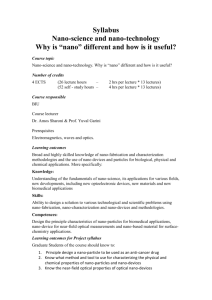Abstract Template
advertisement
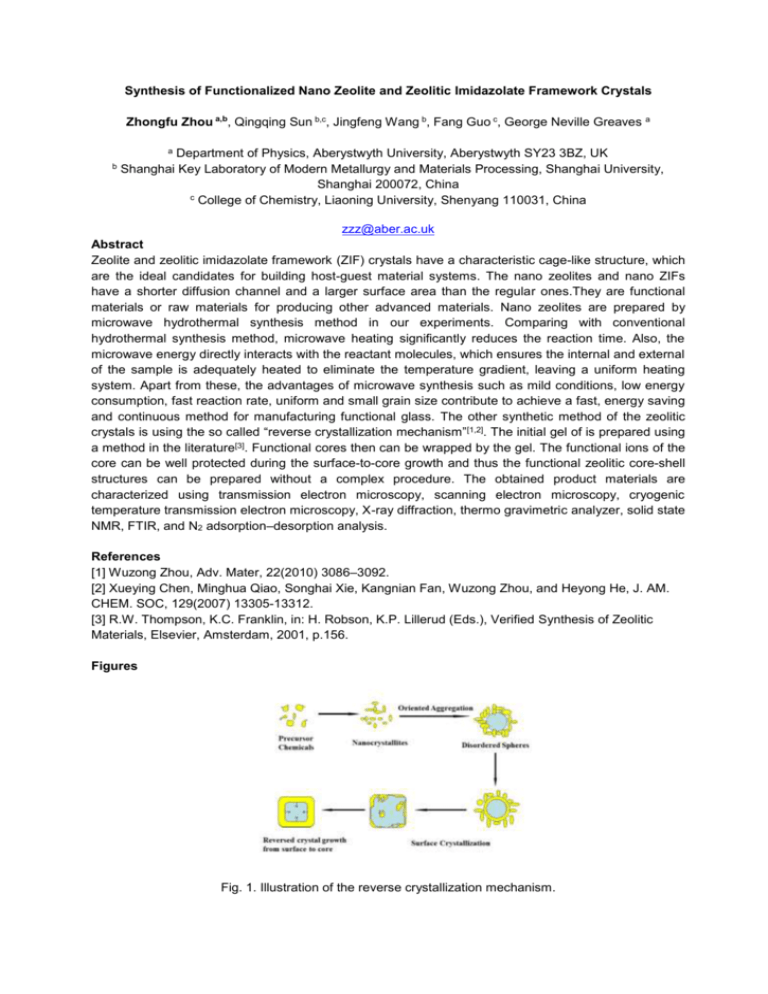
Synthesis of Functionalized Nano Zeolite and Zeolitic Imidazolate Framework Crystals Zhongfu Zhou a,b, Qingqing Sun b,c, Jingfeng Wang b, Fang Guo c, George Neville Greaves a a b Department of Physics, Aberystwyth University, Aberystwyth SY23 3BZ, UK Shanghai Key Laboratory of Modern Metallurgy and Materials Processing, Shanghai University, Shanghai 200072, China c College of Chemistry, Liaoning University, Shenyang 110031, China zzz@aber.ac.uk Abstract Zeolite and zeolitic imidazolate framework (ZIF) crystals have a characteristic cage-like structure, which are the ideal candidates for building host-guest material systems. The nano zeolites and nano ZIFs have a shorter diffusion channel and a larger surface area than the regular ones.They are functional materials or raw materials for producing other advanced materials. Nano zeolites are prepared by microwave hydrothermal synthesis method in our experiments. Comparing with conventional hydrothermal synthesis method, microwave heating significantly reduces the reaction time. Also, the microwave energy directly interacts with the reactant molecules, which ensures the internal and external of the sample is adequately heated to eliminate the temperature gradient, leaving a uniform heating system. Apart from these, the advantages of microwave synthesis such as mild conditions, low energy consumption, fast reaction rate, uniform and small grain size contribute to achieve a fast, energy saving and continuous method for manufacturing functional glass. The other synthetic method of the zeolitic crystals is using the so called “reverse crystallization mechanism”[1,2]. The initial gel of is prepared using a method in the literature[3]. Functional cores then can be wrapped by the gel. The functional ions of the core can be well protected during the surface-to-core growth and thus the functional zeolitic core-shell structures can be prepared without a complex procedure. The obtained product materials are characterized using transmission electron microscopy, scanning electron microscopy, cryogenic temperature transmission electron microscopy, X-ray diffraction, thermo gravimetric analyzer, solid state NMR, FTIR, and N2 adsorption–desorption analysis. References [1] Wuzong Zhou, Adv. Mater, 22(2010) 3086–3092. [2] Xueying Chen, Minghua Qiao, Songhai Xie, Kangnian Fan, Wuzong Zhou, and Heyong He, J. AM. CHEM. SOC, 129(2007) 13305-13312. [3] R.W. Thompson, K.C. Franklin, in: H. Robson, K.P. Lillerud (Eds.), Verified Synthesis of Zeolitic Materials, Elsevier, Amsterdam, 2001, p.156. Figures Fig. 1. Illustration of the reverse crystallization mechanism.
